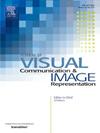Rotation translation matrices analysis method for action recognition of construction equipment
IF 2.6
4区 计算机科学
Q2 COMPUTER SCIENCE, INFORMATION SYSTEMS
Journal of Visual Communication and Image Representation
Pub Date : 2025-04-11
DOI:10.1016/j.jvcir.2025.104460
引用次数: 0
Abstract
Lack of intelligence is one of the primary factors hindering the implementation of video surveillance. Action recognition is a method used to enhance the effectiveness of video surveillance and has garnered the interest of numerous researchers. In recent years, the advancement of deep learning (DL) frameworks has led to the proposal of numerous DL-based action recognition models. However, most of these models exhibit poor performance in recognizing actions of construction equipment, primarily due to the presence of multiple targets in complex real-life scenes. Considering the above information, we have developed a method for action recognition that involves analyzing the motion of the fundamental components of construction vehicles. Firstly, we estimate the essential components of construction vehicles from the video inputs using an instance segmentation method. Secondly, to assess the motion state of the robotic arm of the equipment, we have developed an analysis method based on rotation and translation (RT) matrices. We propose to examine the relationship between action recognition of construction vehicles and RT matrices. The evaluations of the respective datasets were conducted. The experimental results validate the effectiveness of the proposed framework, and our model demonstrates state-of-the-art performance in action recognition of construction equipment. We utilize RT matrices to model the degrees of movement of construction equipment, allowing us to analyze their actions and providing a unique perspective on action recognition. We believe that the proposed framework can facilitate the transition of video surveillance techniques from research to practical applications, ultimately generating economic value.
施工设备动作识别的旋转平移矩阵分析方法
缺乏智能是阻碍视频监控实施的主要因素之一。动作识别是一种提高视频监控有效性的方法,引起了众多研究者的兴趣。近年来,深度学习框架的进步导致了许多基于深度学习的动作识别模型的提出。然而,大多数这些模型在识别建筑设备的动作方面表现不佳,主要是由于在复杂的现实场景中存在多个目标。考虑到上述信息,我们开发了一种动作识别方法,包括分析工程车辆基本部件的运动。首先,我们使用实例分割方法从视频输入中估计出施工车辆的基本部件。其次,为了评估设备机械臂的运动状态,我们开发了一种基于旋转平移矩阵的分析方法。我们建议研究施工车辆的动作识别与RT矩阵之间的关系。对各自的数据集进行了评估。实验结果验证了所提出的框架的有效性,并且我们的模型在施工设备的动作识别中表现出了最先进的性能。我们利用RT矩阵来模拟建筑设备的运动程度,使我们能够分析它们的动作,并提供动作识别的独特视角。我们相信,所提出的框架可以促进视频监控技术从研究到实际应用的过渡,最终产生经济价值。
本文章由计算机程序翻译,如有差异,请以英文原文为准。
求助全文
约1分钟内获得全文
求助全文
来源期刊

Journal of Visual Communication and Image Representation
工程技术-计算机:软件工程
CiteScore
5.40
自引率
11.50%
发文量
188
审稿时长
9.9 months
期刊介绍:
The Journal of Visual Communication and Image Representation publishes papers on state-of-the-art visual communication and image representation, with emphasis on novel technologies and theoretical work in this multidisciplinary area of pure and applied research. The field of visual communication and image representation is considered in its broadest sense and covers both digital and analog aspects as well as processing and communication in biological visual systems.
 求助内容:
求助内容: 应助结果提醒方式:
应助结果提醒方式:


